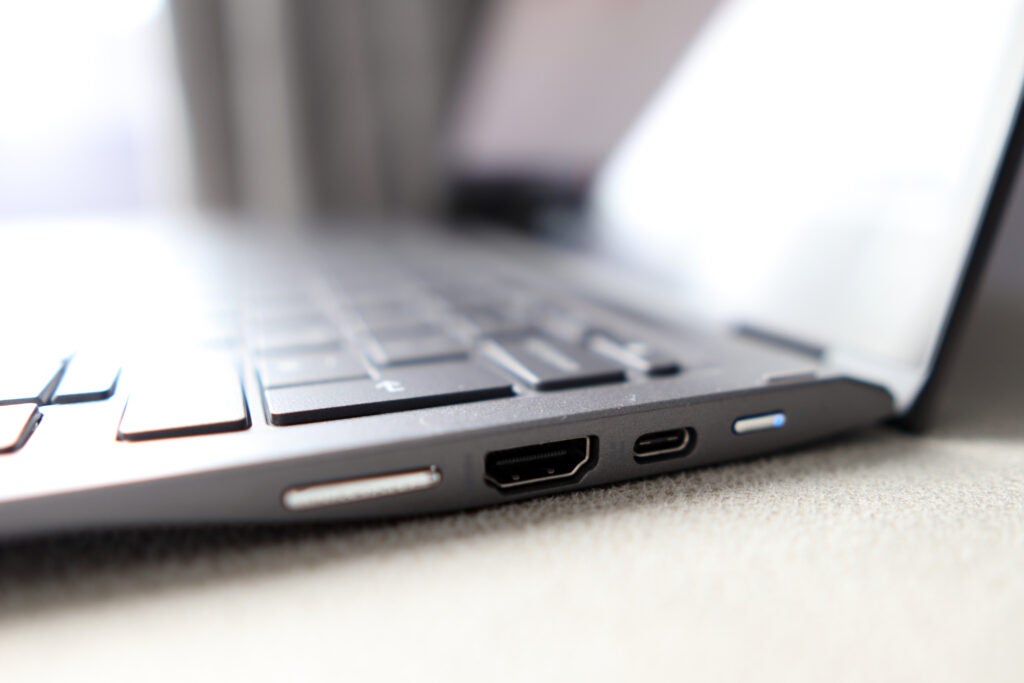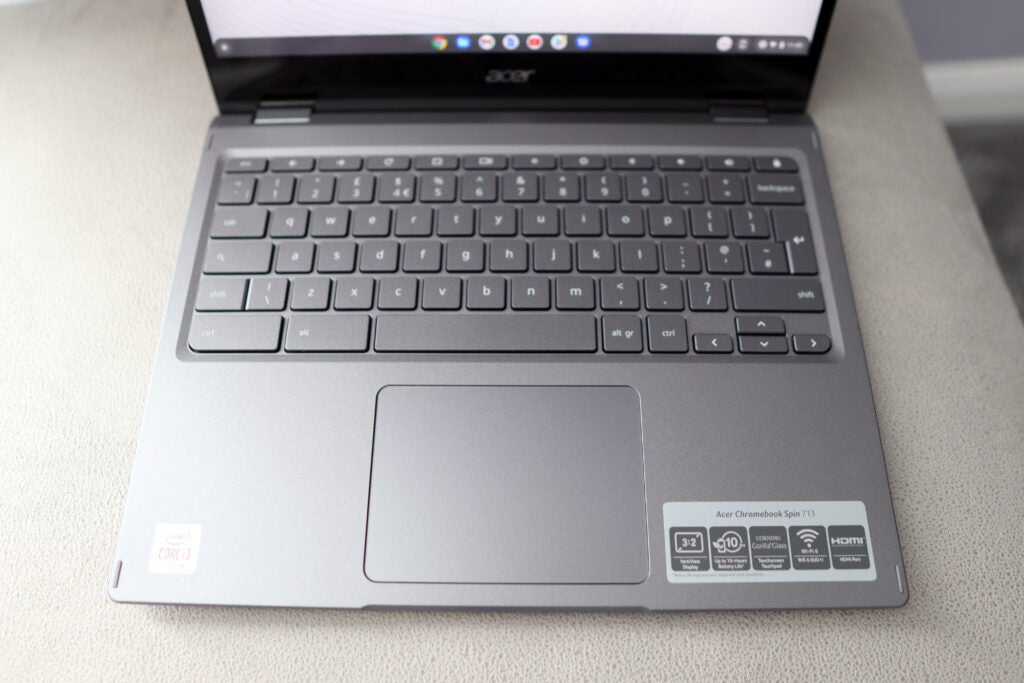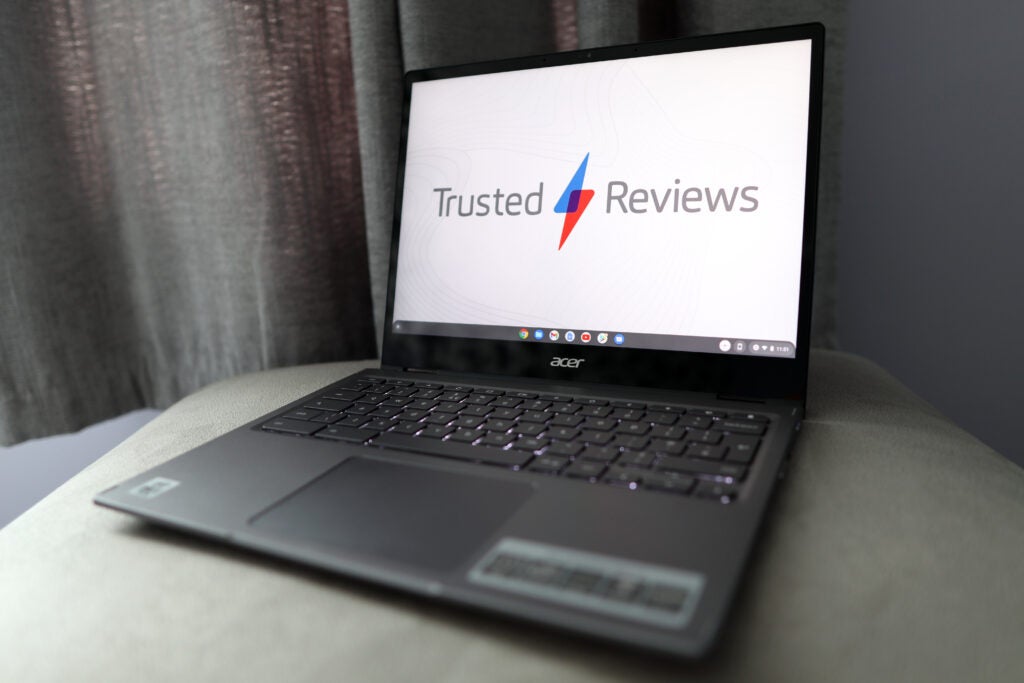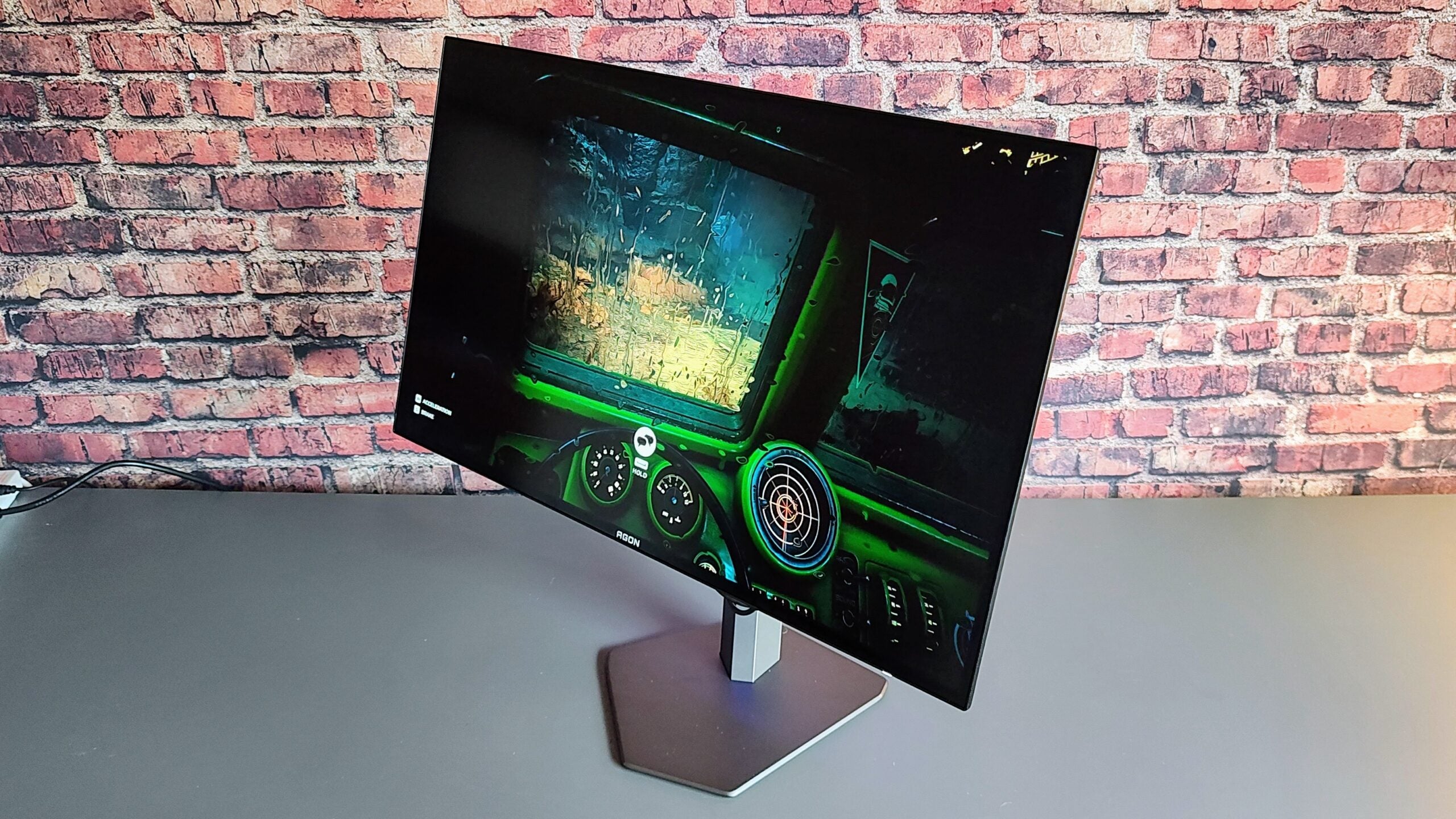Acer Chromebook Spin 713 Review
One of the best Chromebooks you can buy


Verdict
The Acer Chromebook Spin 713 is a fantastic value laptop. With its super-sharp 3:2 display, convertible capability and speedy performance this is one of the best Chromebooks out there. However, you can get cheaper alternatives, so make sure you want the extra perks before shelling out.
Pros
- Incredible display
- Snappy performance for a Chromebook
- Handy port selection
- Backlit keyboard
Cons
- Pricey
- ChromeOS can be limiting
Availability
- UKRRP: £599
- USARRP: $629
Key Features
- 3:2 Quad HD display:With a 3:2 Quad HD display, the Spin 713 offers a superb panel for watching films and videos.
- Lightweight design:It weighs 1.5kg, making it a good choice for students and those on-the-go.
- Great battery lifeIt lasted 12 hours on a single charge in our benchmark tests.
Introduction
Chromebooks have long been a decent option for those looking for a budget-priced laptop, but the Acer Chromebook Spin 713 arguably offers more value than most.
Featuring a 10th Generation Intel processor, Quad HD display and a well-built outer shell, the Spin 713 boasts a spec sheet usually reserved for laptops that cost twice as much. Could this be the best Chromebook on the market, or is there a major catch?
Design
- Classy, dark grey metal shell
- Nicely light and portable
- Great ports and keyboard
Much like its Arm-based sibling, the Chromebook Spin 513, this Intel-powered variant certainly looks the part. Its dark grey outer shell comprises military-grade metals, which make the Acer Chromebook Spin 713 feel more expensive than its price may suggest.
That dark grey colouring gives the Spin 713 a super-modern look, and the thin bezels and a 3:2 aspect ratio help to bring Chromebooks into the 21st century.

At 1.5kg, it offers a good balance between not feeling flimsy, yet remaining light enough to be sufficiently portable to pop in a bag when you’re on the move. In addition, the 713 is a convertible laptop, meaning you can use it as a tablet by flipping the screen over.
Even with it running an Intel processor, the Spin 713 remains remarkably slim. And despite its slender design, it includes a good selection of ports.
You’ll find two high-speed USB-Cs for charging and Thunderbolt capabilities, as well as an ultra-high-speed USB 3.2 Type-A, a headphone jack and an HDMI port. This is a decent selection, especially given there’s a blend of legacy and modern offerings.

For a laptop at this price, the speakers impress, too; they’re remarkably balanced and sound pretty decent. Do note that they’re downward-firing, which can cause muffled sound if placed on a softer surface such as a bed.
On the plus side, the keyboard feels nicely light and tactile, which is perfect for office work. It’s backlit, too, meaning the 713 is a prime candidate for after-dark working.
The trackpad here offers plenty of space for your fingers, but the Gorilla Glass construction does mean it can be jittery on occasion. You won’t find a fingerprint sensor here, though.

Display
- 3:2 aspect ratio is a game-changer
- Positively bright with vibrant colours
- Quad HD IPS panel is a joy to use
It’s on the display front where this beefed-up convertible sees the most noticeable upgrade compared to other Chromebooks. It features a Quad HD (2265 x 1504) resolution, which means you’re getting more pixels than your standard Full HD screen, resulting in sharper images for supported video.
As such, colours are marvellous. The 400 nits of brightness results in a superb screen that works well even in dazzling sunlight. Viewing angles are pretty good, too, thanks to this being an IPS panel.

The biggest plus point, however, is Acer’s choice of the 3:2 aspect ratio. In comparison to your standard 16:9, the company says this display is 18% bigger than the usual 13.5-inch panels on other laptops.
Since this is a taller screen, it can be handy for presentations or just general day-to-day work if you’re browsing or multi-tasking with multiple windows open, especially given that a lot of the internet is based on virtual scrolling.
Performance
- 10th Gen Core i3 provides a great performance
- 128GB of eMMC storage and 8GB of RAM is ample
- ChromeOS is simple to use, but limited
With the Acer Chromebook Spin 713, you get a choice of either a 10th Gen Intel Core i3, i5, or i7 processor from Intel – the review model here shipped with an Intel Core i3-10110U with four cores and a clock speed of 2.59GHz.
This results in a performance closer to the Arm-powered Spin 513 than more powerful Windows systems such as the Surface Laptop Go and Honor MagicBook 14. But considering a Chromebook is designed for casual computing, I have little to no complaints.
It performs well in day-to-day tasks of web browsing and playing some music on Spotify, and the 8GB of RAM does come in handy when having multiple windows open in Google Chrome – the 713 didn’t stutter at all. The Spin 713 is also Wi-Fi 6-enabled, allowing for more reliable and speedier connections with compatible routers.
However, for a £599 Chromebook of this configuration, the 128GB of eMMC memory is a little stingy, especially given that most Windows options have either the same or higher capacities and run much faster SSDs.

If you’re wanting to spend on a convertible laptop such as this, the Spin 713 is a great performer – but it’s also limited by the fact it runs ChromeOS. There are plenty of apps available in the Google Play Store, but a Windows laptop such as the HP Pavilion 14 will offer a greater degree of flexibility when it comes to software downloads.
Battery life
- Lasted 12 hours in the battery test
- Capable of lasting 1-2 working days
The Acer Chromebook Spin 713 exceeded expectations in our battery test: it lasted 12 hours before giving out – that’s two hours more than the quoted figure from Acer.
Since the PCMark 10 battery benchmark is unavailable on ChromeOS, I reduced the screen brightness and looped a 1080p video until the battery ran out of juice. Expect battery life to be closer to 10 hours if you’re dealing with more intense workloads, but this is still superb stamina.
This means it will happily see you through between one and two working days if you manage the battery well. In comparison to the competition, the Spin 713 performs admirably, beating off the likes of Microsoft’s Surface Laptop Go by around four hours.
Latest deals
Should you buy it?
You’re wanting a do-it-all Chromebook:
The Spin 713 excels at providing a nippy Chromebook experience, with a speedy processor, bright display and simple operating system.
You want the flexibility of Windows:
If you want a more flexible OS, the £600-£800 asking price may be better spent on a Windows or MacOS-based alternative.
Final Thoughts
The Acer Chromebook Spin 713 represents a great investment if you’re looking for a do-it-all Chromebook with a super-sharp display, snappy performance, a great-feeling keyboard and handy port selection.
However, there’s no denying that £600 for a Chromebook is a little high considering their primary audience and use cases. At the top end, this Spin 713 can cost £800 or so, at which point it becomes better to look for an M1 MacBook or generation-old Windows ultrabook.
How we test
Every laptop we review goes through a series of uniform checks designed to gauge key things including build quality, performance, screen quality and battery life.
These include formal synthetic benchmarks and scripted tests, plus a series of real world checks, such as how well it runs the most frequently used apps.
We also make sure to use every laptop we review as our primary device for at least a week to ensure our review is as accurate as possible.
Used as our main laptop for the review period
Tested for at least a week
Used consistent benchmarks for fair comparisons with other laptops
Tested the battery with a benchmark test
FAQs
Yes, and the Spin 713 is also a convertible laptop.
The Spin 713 can handle entry-level titles such as Minecraft, but anything beyond that will be pushing this system too far.
Yes, and plenty more besides.
Full specs
Jargon buster
ChromeOS
The operating system used by Chromebooks, which shares similarities to the Android software found on smartphones. It’s largely app based, but not quite as flexible as Windows.








